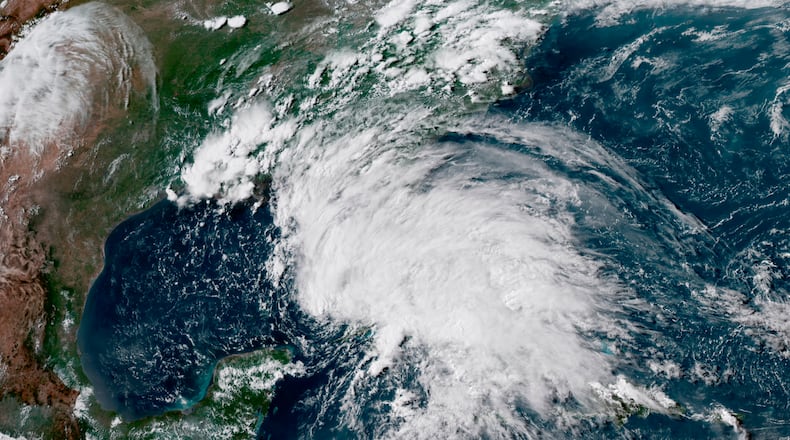The beginning of June means the start of another hurricane season, and this season got a head start with Tropical Storm Alberto, which brought deadly flooding to Florida and the Southeastern United States this week.
During the official 2018 hurricane season June 1 through Nov. 30, weather experts are predicting normal or above-average trends. A normal season consists of about seven hurricanes.
"There are no strong climate signals saying it's going to be extremely active, like last year, or extremely weak," National Oceanic and Atmospheric Administration forecaster Gerry Bell told reporters last month.
The NOAA expects a 70 percent chance of 10 to 16 storms, five to nine of which would be strong enough to be recognized as hurricanes and one to four as major hurricanes, which means a category 3 or higher on the Saffir-Simpson Hurricane Wind Scale.
Researchers at Colorado State University's Tropical Meteorology Project, who issued an extended-range forecast for 2018 in April, expect a total of 14 storms, including seven hurricanes, three of which may be major.
Forecasters at another university, North Carolina State, also predict at least 14 storms, seven to 11 of which would be hurricanes. Three to five, they estimate, could be major hurricanes.
Last year, most researchers expected an above-average hurricane season, but not an extreme one. Unfortunately, 2017 was one of the most catastrophic and extreme hurricane seasons on record, with fatalities estimated near 5,000 due to Hurricane Maria.
So, it’s safe to say there’s some uncertainty about this season’s estimates.
"It's hard to predict the number of hurricanes because they're formed by a complicated interplay of climate and weather variables," Vox reported. "Yes, warm waters are a key ingredient to fuel storms. But hurricanes are also influenced and steered by massive global trends in weather that are hard to predict."
Such trends include the warming or cooling of waters in the Pacific Ocean, patterns of the weather system Madden-Julian oscillation, which makes thunderstorms more likely and temperature variations between the surface and the atmosphere more extreme.
What 2018 taught climate scientists is that hurricanes are getting much wetter with increased rainfall and warming waters.
Recent research from the National Center for Atmospheric Research also found that wetter storms are in our planet's future. And climate change, including human-induced climate change, has amplified the storms, experts said.
In fact, scientist Karin van der Wiel, who co-authored "Environmental Research Letters" said she could not have predicted a storm like Hurricane Harvey for thousands of years. But now, the likelihood of such events has changed.
"It's between 1 1/2 and five times more likely now than in preindustrial times," she told Vox.
Federal Emergency Management Agency officials warn that coastal areas in Georgia may experience serious damage due to impending storm surge, rainfall, winds and tornadoes.
FEMA Regional Administrator Gracia Szczech previously told The Atlanta Journal-Constitution that residents should prepare by doing simple things such as coming up with a family plan and being financially prepared.
About the Author
Keep Reading
The Latest
Featured


